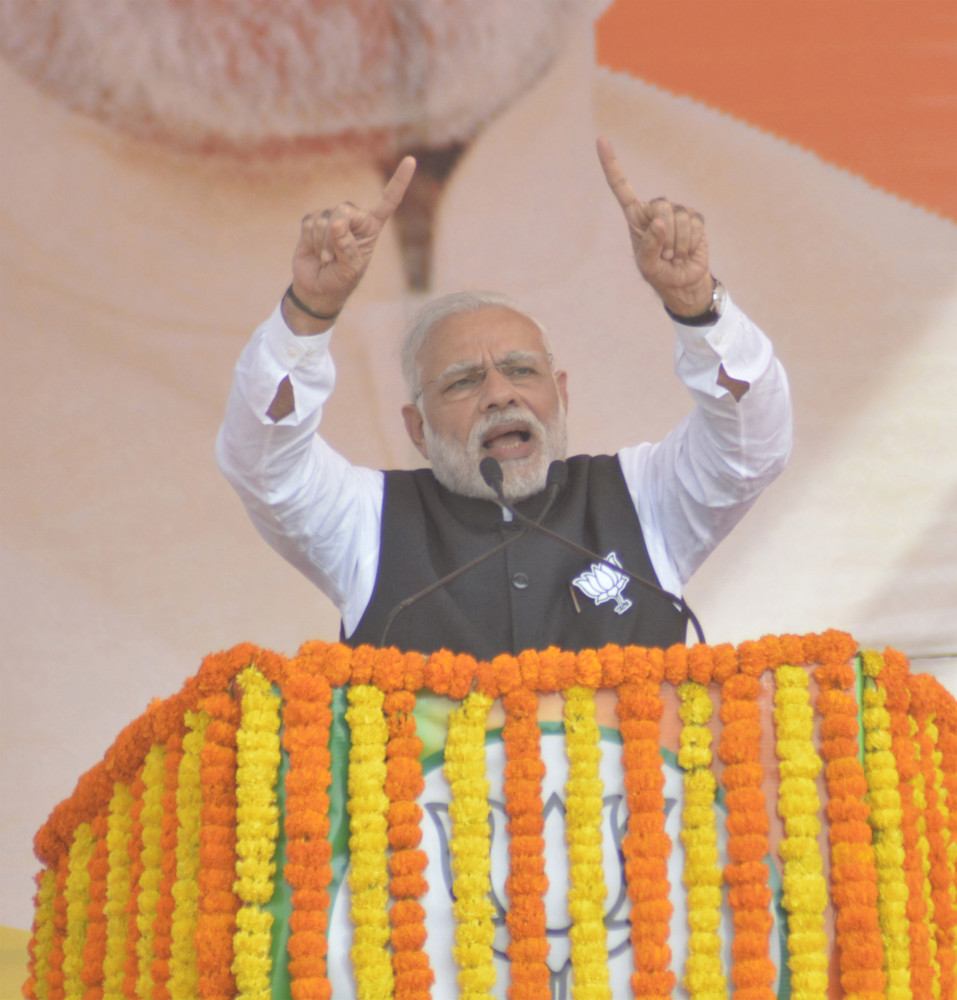By Vrishti Beniwal and Bibhudatta Pradhan
Bloomberg News
WWR Article Summary (tl;dr) At a recent global meeting, Prime Minister Narendra Modi said women are the incarnation of Shakti, the goddess of power, and “vital to our development.” However, India’s gender gap ranking has fallen 21 places from last year mainly due to poorer political empowerment, healthy life expectancy, and basic literacy for the bulk of women.
NEW DELHI
As more women go out to vote in India while their male counterparts stay home, Prime Minister Narendra Modi is shifting attention and planning a raft of female-focused policies before the 2019 national election.
Following the popular roll out of cooking gas for rural families that frees women from smoky woodfires, Modi is pushing to outlaw so-called instant divorce in Muslim communities.
He’s also keen to reserve seats for women in parliament and backroom consultations have begun, according to two people with knowledge of the matter.
“Women emerging as a vote bloc would be a crucial factor in deciding the election” though there is no sign that they vote for a party that picks their issues, said Sanjay Kumar, director of the New Delhi-based Centre for the Study of Developing Societies. Yet, “there is a trend to mobilize them. There is greater thrust on women’s issues by Modi’s government.”
Women outnumbered men at polling booths in half of India’s states in 2014, but a Pew survey conducted this year showed they were also more critical of Modi’s policies, including his handling of rising prices, pollution and communal tensions. His choice of a Hindu monk to lead one of the worst states for women in India has also raised some eyebrows.
“Does his acolyte, Swami Adityanath, really care about the status of women?” said Sumit Ganguly, professor at the Tagore Chair in Indian Cultures and Civilizations at Indiana University, Bloomington, referring to the chief minister of Uttar Pradesh who has voiced, among other views, that women need protection, not independence. “Rank paternalism in much of” the ruling party’s leadership is constraining Modi’s ability to effect significant change, Ganguly said.
In a country that worships goddesses and boasts several top women bankers, Modi rarely fails to evoke women when speaking at public platforms. At a recent global meet attended by Ivanka Trump, daughter and adviser of President Donald Trump, he said women are the incarnation of Shakti, the goddess of power, and “vital to our development.”
However, India’s gender gap ranking has fallen 21 places from last year mainly due to poorer political empowerment, healthy life expectancy, and basic literacy for the bulk of women, according to a 2017 report from the World Economic Forum. The rate of crime against women is little changed since Modi came to power in 2014, and the share of women in India’s workforce is declining from what was already one of the lowest among emerging economies.
“In the arena of women’s workforce participation India has moved backward instead of forward in recent years,” said Alyssa Ayres, senior fellow for India, Pakistan and South Asia at the Council on Foreign Relations. “This is not just an issue of equality, which of course it is, but one that can have a major impact on the country’s prosperity.”
India’s gross domestic product in 2025 would be 60 percent higher if women attain equal status at work than if it stays at current levels, according to McKinsey & Co.
Modi is trying the bridge the gap. His administration has:
-Provided safer cooking fuel to poor families as the government tries to reduce premature deaths from household air pollution.
-Increased maternity leave and mandated childcare facilities for working mothers.
-Proposed minimum wages and social security benefits for India’s 3.9 million domestic workers, of which 67 percent are women.
-Started campaigns to encourage education for girls.
His next plan is to make punishable the act of triple “talaq,” in which a Muslim man can instantly leave his wife by saying the word “talaq”, which means divorce, three times.
Modi is also reviving the Women’s Reservation Bill, the people said, asking not to be identified as they aren’t authorized to speak to the media. The move, which proposes to reserve a third of the seats in federal and state legislatures for women, has been pending for close to two decades due to lack of consensus among political parties.
Ranjana Kumari, director of the Centre for Social Research, said she doesn’t expect major opposition if Modi’s administration revives the reservation bill.
Not everyone is as optimistic.
“Women are half of society, so focusing on them is critical,” said Nikita Sud, associate professor of Development Studies at the University of Oxford. “However, one individual cannot initiate progressive change for half a billion people.”
___
(With assistance from Debjit Chakraborty.)














































































































































































































































































































































































